(first posted 4/24/2017, updated and expanded over the years. Much to my surprise, this article is often the top non-paid Google search result for JC Whitney. I am humbled and honored to be able to contribute my small experiences to the JC Whitney legacy.)
Regular readers of my Cars of a Lifetime series will know by now that I spent some time working for JC Whitney at the corporate headquarters in Chicago. Given how deeply this brand is ingrained with US car culture, I figured I would share my unique insider’s perspective on the company, especially in its final years.
While I normally dislike quoting Wikipedia in my posts, I will take some liberties here, since part of the Wikipedia article on JC Whitney was authored by yours truly. JC Whitney began as a scrap metal yard on Chicago’s south side, formed by Lithuanian immigrant Israel Warshawsky, who came to the US to escape religious persecution. Warshawsky named the company JC Whitney in order to give the company a less foreign-sounding name.
Early Origins
While Israel did alright for himself, things really started to pick up when his son Roy Warshawsky joined the business in 1934. Possibly inspired by the success of fellow Chicago mail-order giant Sears and Roebuck, it was Roy’s idea to expand the business beyond Chicago by entering the burgeoning mail-order catalog business.

Initially, he started promoting the business with classified ads in magazines like Popular Science and Popular Mechanics. Many of these ads are available in the magazine archives at Google Books, which I’ve sprinkled throughout my post.
The business really hit its stride in the 1950s. The ads eventually blossomed from 4 liners in the classified section to full-page spreads. With the widespread distribution of its now iconic catalog, JC Whitney was well on its way to becoming an institution.

Ah, the JC Whitney catalog: The pulp paper, the dense pages with tiny print, the minimalist line drawings. It is an interesting window into the automotive zeitgeist of the 1950s and 1960s. These decades marked the heyday of JC Whitney.
At the time, JC Whitney still sold a lot of what we would later call “hard parts.” These are typically replacement items like alternators, brakes, body panels, and even complete engines, as shown in the ad above. Almost always made of steel or iron, hard parts are expensive to ship, and have a relatively low profit margin.
But of course, it is not the hard parts that made JC Whitney famous, but rather all those wild, wacky accessories. Unlike hard parts, accessories are cheap to make, buy, and ship, and in later years were manufactured inexpensively in China. Some of our most profitable accessories had gross selling margins upwards of 50%, and sometimes more.
Whether these gimmicks worked or not was almost beside the point. I’m sure deep down not many people expected paint on whitewalls to look as good and last as long as the real thing. They were selling the dream that Joe Lunchpail could have whitewall tires just like his snooty neighbors.
Whenever manufacturers added new styling, technology, or safety features, JC Whitney was always right behind to give wannabes in older rides the new car look, whether it is the 1958-style quad-headlight look for your 1957 car, or a third brakelight for your pre-1986 ride.
With their eclectic product mix and low-budget outré, JC Whitney had something for everyone, and was able to bridge several otherwise non-overlapping automotive subgenres:
- The hardscrabble, down-on-their-luck kinds, who need to keep their jalopy running with minimal cash outlay. After all, who else would need a VW hand starter?
- Those who wanted to accessorize their car with styling cues and features of more expensive cars.
- Those who wanted to individualize and customize their cars.
All were welcome under the JC Whitney tent. Income inequality? Not here. At JC Whitney, everyone can have a third brakelight or continental kit on their car.
Seeds of Destruction
And so it went, for several decades. By the 1970s, cracks were beginning to show in the facade, as the combined forces of rising gas prices, primitive electronics, and emissions controls began to conspire to make it more difficult for the average owner to work on their car, a trend that continues into the present day. Indeed, while researching this article, I discovered that JC Whitney filed for Chapter XI bankruptcy in 1979, a fact not well-known even to the employees of the company. Obviously, they were able to successfully reorganize their debt, but these were the first hints of trouble.

By the 1980s and 1990s, the lower-margin hard parts began to disappear from the catalogs, replaced by an increasingly chintzy assortment of cheap (but profitable) Chinese-made accessories, as the ad from 1992 above indicates. The tiny print and homespun line art was still there, but many of the products were now useless junk.
Roy Warshawsky retired from the business in 1991 and died in 1997. Roy’s last surviving sister sold the company in 2002 to The Riverside Company, a private equity investment firm. At this point, JC Whitney was no longer a family-owned company, but for the time being, was still Chicago-based. Although details of the transaction were never made public, informed speculation around the office was that the sale was for somewhere around the $60 million figure, for what that the time was a company with $170 million in sales. This was already down from peak sales volumes north of $200MM in the ’90s.
Last Gasp
In 2006, Riverside made one last-ditch effort to revitalize the business. Riverside acquired my employer, truck accessory catalog company Stylin Concepts, and shoved us together in a shotgun marriage.
Riverside had correctly identified that the automotive aftermarket business was ripe for consolidation and figured that JC Whitney would be the instrument for that consolidation. Towards that end, they created Whitney Automotive Group as a kind of parent holding company, with an eye toward other acquisitions and brand expansion. Riverside brought in a young, hotshot executive from Dell to boost our eCommerce street cred, and created a new vice-president of M&A (merger and acquisition) position. We moved into fancy new digs on the top floor at the corner of Michigan and Wacker Drive, right at the doorstep of Chicago’s Magnificent Mile. In an effort to give the place a startup vibe, the dress code was relaxed to jeans, and the de rigueur foosball table placed in the lobby along with a video wall.
Roy was long gone by the time I joined the company, but his legacy was everywhere. Portions of his collection of antique gas pump globes and other automobilia still decorated the office, along with pictures of some of the cars from his large personal collection of cars (with a particular fondness for 30’s luxury brands, including a V-16 Cadillac once owned by the King of Denmark). The conference room that housed most of these items was still called “Roy’s Garage.”
We had all kinds of great ideas, many of which were long-term bets that may have eventually paid off had we been able to wait it out. Among them:
- Install Pro – While Whitney long catered to the DIY (Do It Yourself) market, we thought we could carve out a new niche in the DIFM market (Do It For Me). We set up a network of installation shops (similar to what Tire Rack does), where the customer could pay for installation along with the product, and we would ship the parts directly to the installer. A good idea, but we weren’t able to put enough effort into it to assemble a large enough network of installers, nor were we able to market it properly.
- carparts.com – JC Whitney’s business was constantly under assault by what we called “ankle-biters” – small fly-by-night companies with a search engine optimized online storefront and not much else: No inventory (strictly drop ship), no customer service, no catalogs, and (most importantly) none of our fixed costs. Carparts.com was our attempt to create a no-frills website in the same vein that could compete on price with the ankle biters. In exchange for bargain basement prices, it had no phone number and outrageous restocking fees for returns. It also made very little money.
- Sears at the time was trying to fashion itself into an eCommerce portal similar to Amazon, so we entered into a co-marketing agreement where we would create and maintain the auto parts portal on sears.com, and we would handle the fulfillment. In return, it seems, Sears got most of the profits, and we just got some contribution dollars to fixed costs.
- We spent enormous sums of energy looking at many potential business acquisitions, ultimately without consummating a single deal.
Readers of this site will be well familiar with the concept of a flywheel. A similar concept applies to the core business of any company, which in Whitney’s case was its core auto accessory business. A flywheel can take a tremendous amount of effort to get spinning, but once it gets going, momentum will keep it spinning cash with little to no investment for seemingly forever. But alas, flywheels eventually slow down, and so it was with JC Whitney’s. With all these efforts spent towards growing and expanding the business, the core business was withering away due to inattention faster than the new business opportunities were growing.
A funny thing happened on the road to recovery in 2008: The financial collapse that sparked the Great Recession intervened. Credit became non-existent, effectively killing any M&A activity. Worse, we were trying to reposition JC Whitney upmarket (with carparts.com moving in towards the bottom end) at the worst possible time. Remember the companies that were doing well between 2008 and 2010? Low-end consumer companies like McDonald’s and Walmart. With JC Whitney, we had a brand name synonymous with cheapness, and instead of capitalizing on it, we were running away from it.

About that brand: Major companies spend millions of dollars promoting their brand, keeping it top of consumers’ minds. JC Whitney, on the other hand, spent virtually nothing on branding, and as a result, it was quickly becoming an aging brand among the likes of Ovaltine or Prell. People kind of vaguely knew about JC Whitney, but it didn’t really resonate anymore. Indeed, the most common reaction I got from people when I told them I worked at JC Whitney fell into two categories: “My Dad used to buy from you,” and “You guys are still around?” Not the kind of word association you want for your brand.
Beginning of the End
Over the next few years, the core JC Whitney business continued to founder. Customers continued to age and die out of our mailing list (whose average age was in their 50s). Sales continued to spiral downward to around the $120 million mark, as a whole new generation of buyers who had never heard of JC Whitey went to places like eBay, Amazon, and Google for their parts.
It is said that the only thing harder than managing growth in a business is managing decline. We were shrinking towards being a $100 million business, but we still had the cost structure of a $250 million business. We couldn’t reduce our costs fast enough, so we ended up piling on debt. We were leveraged to the hilt: We borrowed against every asset we had, and had gotten to the point where we were essentially financing the business on the backs of our vendors. As we continued to delay payments to our suppliers, it had gotten to the point where some were refusing to sell us products or extend us any more credit. Everyone knew that the end was near.
At this point (around the summer of 2010), Riverside announced to the world that they were shopping for a buyer for WAG. Our ideal outcome would be an “angel investor” who would be willing to make the necessary investments to revive our moribund brand for the 21st century. Our worst case would be a competitor who would shut us down and strip us of our two main assets – our brand and our customer list.
While we had numerous potential suitors come through our doors (including most of the major brick-and-mortar auto parts resellers), in the end, the outcome was the worst-case scenario I outlined above. Rival competitor US Auto Parts ended up acquiring Whitney Automotive Group (along with all its debts) for $27.5 million on August 17, 2010. I thought this was a good price; more, actually, than I thought what was essentially a break-even business was worth by the time you subtracted all the liabilities.
Once the deal closed, USAP moved quickly to reduce headcount, including the entire WAG executive team. I was one of the lucky ones (along with most of my IT team), who got to spend the next seven or eight months winding down the Cleveland and Chicago offices, and migrating all the JCW systems over to USAP’s platform. I must give credit to US Auto Parts for how they handled the acquisition. I always felt like an active participant in the integration, and not just watching from the sidelines. They handled everything very professionally and made sure I was taken care of with a decent severance package.
US Auto Parts is not the villain of this piece, however. Whitney’s wounds were self-inflicted, and USAP was just there to scoop up the pieces. USAP paid a heavy price for their purchase: Whitney was in much worse shape than the brief discovery period before the sale closed allowed them to fully realize. Their stock has been stagnant for the past seven years, and they are only now returning to profitability.
As I insinuated at the beginning of this article, JC Whitney still exists today, but only as a storefront for US Auto Parts. Other than the name, there is no longer any connection to the Chicago-based company founded by Israel Warshawsky 102 years ago. The Chicago office is long gone, although the distribution center in La Salle still exists, along with the outlet store, they are both owned by US Auto Parts. The general print catalog, which was an enormous marketing expense, is mostly a thing of the past. Only two specialty books still exist, and they are for the largest and most profitable segments: Jeep and Truck. All the other specialty catalogs (Classic VW, Motorcycle, Auto) are long gone.
Postscripts
July 16, 2020: US Auto Parts Network (now rebranded as CarParts.com) announced that it is shutting down the jcwhitney.com website and that it has ceased all print catalog publication. JC Whitney will live on only as a private label brand for some (presumably cheap) CarParts.com auto accessories.
October 2023: Jcwhitney.com is reborn as an automotive lifestyle blog with search engine-friendly content designed to funnel clicks back into carparts.com. While the print catalogs are still gone (likely never to return), they are, somewhat curiously, offering a print magazine for those who still wish to consume JC Whitney in physical form.
Related Reading
Curbside Newsstand: JC Whitney to Cease All Sales
References
https://www.hemmings.com/magazine/hcc/2006/10/Roy-Warshawsky/1351501.html
http://multichannelmerchant.com/news/j-c-whitney-sold-01082002/












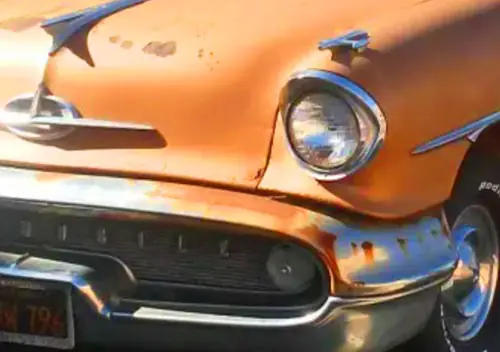
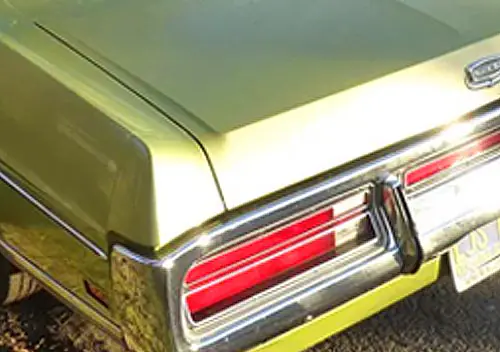
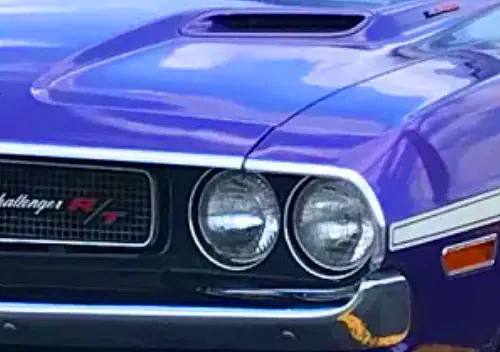

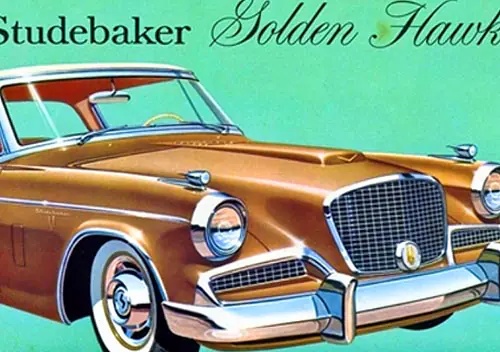
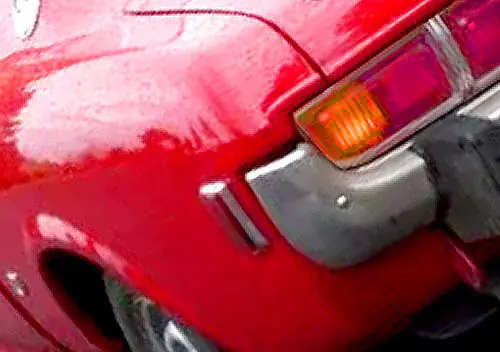
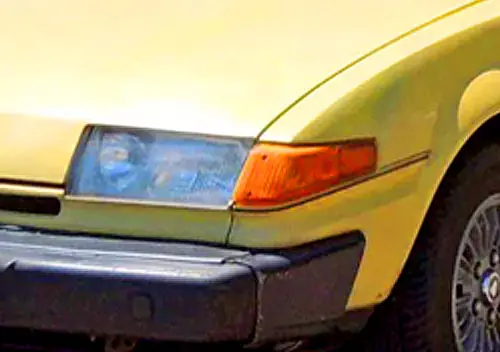
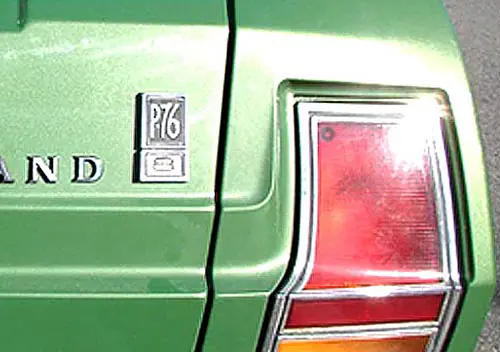
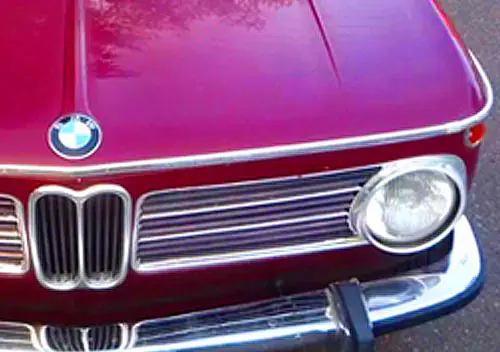
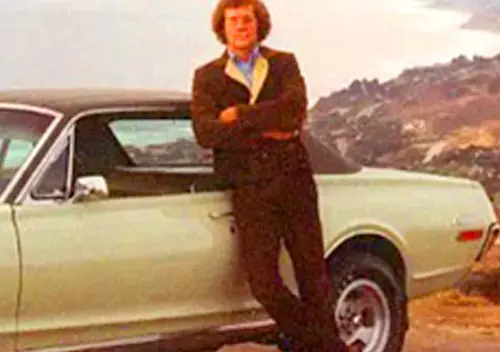

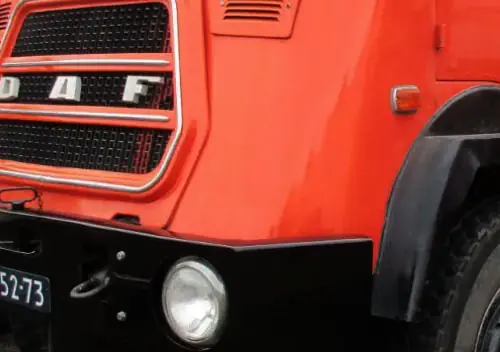
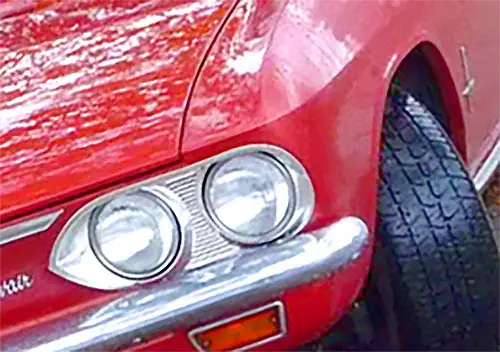
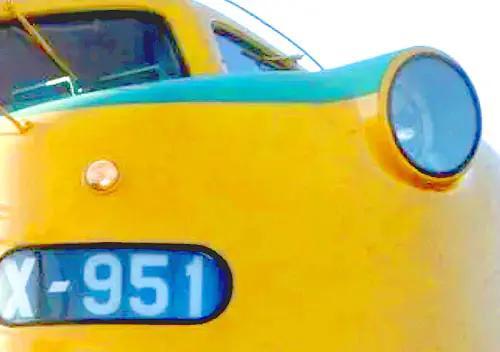
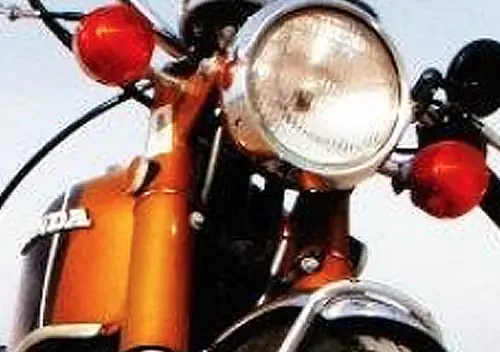
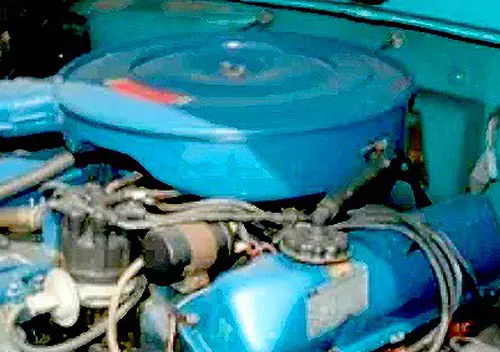
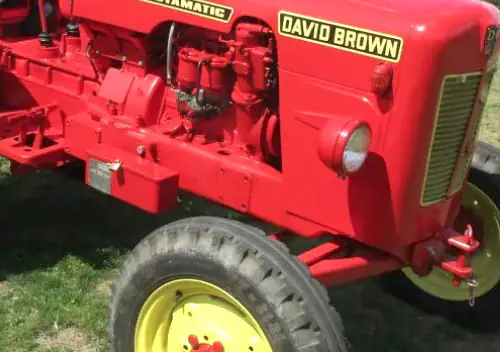
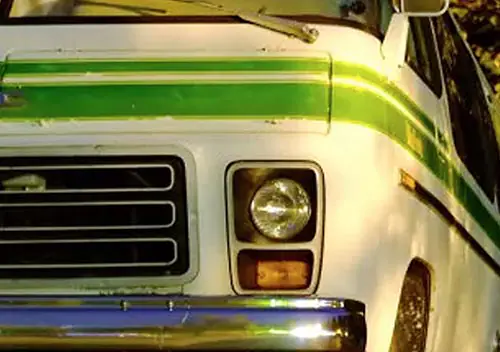

Much to my Mother’s chagrin; a Whitney catalog was always found on the bathroom floor, next to the toilet, for “throne reading”. Every time she would throw a curled up pages catalog away; a new one would appear a few days later.
My Father and I bought many items from JCW over 40 years!
Very interesting history, thanks for that. I must say I never bought anything from JC Whitney, I always read the ads with interest and thought “how good can that possibly be?”
Around here WAG stands for Wild Ass Guess, when we’re doing a project estimate and don’t have time to get a quote for some item, we pick a number out of the air and put “WAG” in the description field.
Winky the cat is pretty cool, but I think it would be even better as a hat.
I’ve used WAG for Wild Assed Guess for many years too. Another case of corporate branding missing the obvious negative connotations of their abbreviation.
Kind of like when the UK’s Office of Government Commerce unveiled their new logo, and thirty seconds later someone rotated it 90 degrees…
LMAO.
Bought many items from jc whitney over the years. Sorry to see them go. Hope the product I just ordered will get here on time. Didnt know I wasn’t ordering from jc whitney.
Interesting. I was president and ceo of JC Whitney from 1998 to 2006 and while there is some accuracy in the authors account, it is limited. The author may have come in after I left, I assure you his account of the times in the 90s into the Riverside acquisition is greatly misleading. Bottom line is I never met or heard of the author of this article so I am not sure of his source of information. I assure you JC Whitney’s history is much more rich and favorable of its associates than he depicts
I thought of you, Tom B. and Roy when I read this one…some of us have been around too long!!
Cheers,
Peter
Don’t forget SWAG.
The “Scientific” WAG. 😉
In the real estate business that was called a sophisticated wild-assed guess….
WAG in the UK generally stands for “Wives and Girlfriends” – the blond women who accompany famous sportsmen.
Closely related to SWAG… Stupid Wild Ass Guess 🙂 .
Hi is this ROGER STOCK who used to take care of the JC Whitney classic card in Chicago ? If so hello Roger ! Remember me — Mike Davis and Shaggy Dog of street rod south side Chicago fame !!! I hope you are well Roger ! Enjoyed and learned soo much from you about the industry ! I still remember the cars leaving the collection and the sales of the ones that were left over. I beleieve shaggy got a 11938 Buick that was a project ! If this is you roger.. please call me at 501.777.0939 I heard that Shaggy died some years ago and that his sons have his hot rods and shop !
Mike
JC Whitney was my go to catalog in the 70’s and 80’s. I even bought a fiberglass keep cj 6 (extended body) for my rebuild.
One of the most reliable catalogs back in the day!
Rest In Peace JC Whitney!
Interesting story. JC Whitney was still an icon when I was in high school in the early 90’s, the catalogs were all over and they were fun to look through. But I don’t know if anybody I knew actually ordered anything.
A buddy and I ordered some stuff ca. 1991. It was pretty much crap. Mail order Pep Boys accessories.
In the late ’80s, JC Whitney’s catalogue promised all the parts necessary to restore a VW Beetle into an ill-fitting, short-lived approximation of a VW Beetle. I knew two people who ordered the parts, but they might have been better off ordering raw materials and fabricating their own. The parts JCW delivered seem to have been made by someone who’d never actually seen a Beetle, although perhaps they’d overheard a spirited conversation about VWs in a bar once.
I think Winky would have caused more accidents then helped to prevent them. In real life that was a very ugly accessory and not cute looking like the drawing infers.
Here is a youtube video of how it worked
https://www.youtube.com/watch?v=faM6DYq5ETs
Still JC Whitney did have a novel idea with it. A warning light on the parcel shelf would have attracted more attention from drivers behind them. This predatesthe 3rd brake light mandated in 1986.
Yikes. Winky would have been right at home on the rear parcel shelf of a red 1958 Plymouth Fury.
Ha! Yep, that thing’s pretty terrifying.
The spiritual successor to JC Whitney in some ways is Harbor Freight. I suspect someone responsible for the look of the HF ads and flyers was an avid JC Whitney catalog reader in earlier days.
Yes. Same tacky vibe with the HF catalogs today.
No one admits it, but we all buy at HF too! My favorite thing is the “Pittsburgh” brand name. It has about as much to do with Pittsburgh as Pizza Hut has to do with Italian Cuisine. OTOH, one of the better known financial institutions in Pittsburgh is called…..Northwest Savings Bank…?
I admit it .
.
Don’t slam H.F. too much ~ they make it possible to do many jobs the average Joe couldn’t do before, right at home .
.
As long as the tool doesn’t injure you and last for the one job, it’s good dollar value IMO .
.
-Nate
I’m not knocking HF (as I’m a regular customer, there’s one a couple of miles from me). I was just poking fun at the brand “Pittsburgh” for it’s name (not from Pittsburgh,but Asia). The tools them selves (the ones I’ve bought) are perfectly fine ?!
Your absolutely right. Have been able to restore many a vehicle due to HF and back in 2005-2006 JC Whitney!
Like many, I had no idea that JCW still existed in the 90s. I used to devour those catalogs in the early 70s. In my years of collecting roadside hubcaps, I became familiar with the JCW (almost) lookalike knockoffs that were inevitably rusting. I assumed that everything else in their catalogs were as cheaply made.
A fascinating story.
The only thing I liked about my ’62 Sunliner was the wheel covers, so when I got a ’61 Galaxie (6cyl, stick shift, no power anything, surprisingly pleasing to drive) I ordered Whitney imitation ’62 covers for it. They were extremely thin aluminum so I treated them gingerly, but the high polish finish looked really great.
I vividly remember perusing the JC Whitney (often called ‘JC Worthless’ by older folks) catalogs and dreaming of the day when I had some ca$h to spend on my truck or jalopy as the years rolled by .
.
In the early 1970’s I actually bought several boxes of VW parts and nothing was crappo quality, I was surprised by this .
.
I always wanted that rope start thing for my old VW Beetle….
.
-Nate
I didn’t have a Beetle but I did lust after the “Rolls Royce” dress up kit that JC sold for the Beetle. Largely because I thought it was funny.
Actually, it was easy to start a VW Beetle just by shifting to 3rd gear, jacking up one rear wheel, and turning it by hand. My first new car was a 1964 VW and I tried that just to see if it would work; it did.
My very first Beetle had a dead battery so I had to push start it every where I went .
.
This didn’t amuse my then H.S. girlfriend but it was that or walk……
.
These days even poor boys can afford halfway decent cars .
.
-Nate
Those damn catalogs. Even though there was a sticker on the cover, loudly proclaiming, “This is your last one!” if you didn’t order something right away, they just kept coming and coming. OTOH, they were a good cure for insomnia. Although JC Whitney was more widely known, there was also the identical Warshawsky & Co. catalog.
In a complete reversal of how online mail ordering has cut into big box store sales, I wonder how much the proliferation of auto parts store chains like Pep Boys, AutoZone, Advance, O’Reilly had to do with the decline of low-priced mail order auto parts.
Or maybe it was the sharp decline in what was already questionable quality as the move was made from US to Chinese sourced products.
Not to mention the high probability that cutting into wires to add stuff like Winky the Cat would invariably short-out brake/taillights in the process.
Ya, I used to go to the Warshawsky store on Archer and State to buy parts. The countermen were very accommodating and knowledgeable. The floor was packed with customers. That was in the 50’s and 60’s. Then they moved to a factory hole in the wall on Throop street, and the goods were Chinesium. Around that time they morphed with J C Whitney.
You could try Rock Auto. I have found them to be an excellent substitute.
Actually Warshawsky had a State Street address and J C Whitney has an Archer Avenue address. The building was one and the same back then. Been there many times. I had always thought J C Whitney was a way to hide their Jewish roots.
I too shopped at the Warshawsky store many times as a teenager in the 60’s and onto the 70’s. I worked at Sherman Ford on Cermak and Prairie St back then as well. It appeared the whole precinct businesses were car related: Illinois Auto Parts, re-chrome and alternator/Generator remanufacturers to name a few. On Saturdays driving in on Archer ave one could observe many a ‘225’s changing oil right there at curbside, TV antenna’s and diamonds in the back galore.
The catalogues were a boy’s dream in print form.
I moved overseas in 1977 and returned for awhile in the mid-80’s but by then so much had changed.
btw, after moving out of State, I would refer to “Warshawsky’s” to my car friends and only got blank looks. I didn’t know who or what JC Whitney’s was but eventually connected the 2.
Yes, those damn catalogs. Many years ago I requested that they take me off their mailing list. This was after years of buying useful and competitively priced auto and motorcycle parts from them. After several calls over months (they had a phone number that a real person would answer back then, which I miss a lot with many companies nowadays), they just kept sending them. So I simply started buying parts at local and chain stores, usually at a higher price. As far as I know, they might still be sending catalogs to my old address. Too bad they didn’t seem to care about customer requests about their mailings.
Never ordered from JCW but I do remember the seedy Warshawsky muffler shop on the wrong side of downtown Rockford. It was a dump when I first saw it and the last time I saw it.
15 yeas ago, I bought tires for old Allstate-Puch motorbike, and vintage-style seatbelts for a ’60 Mercedes from J C Whitney.
Many years earlier, they used to list parts for many orphan vehicles, including a Hillman Minx I used to own.
I still keep one or two of their old catalogs for nostalgia and wondered what became of the company.
Happy Motoring,
Reads like an article from Vanity Fair or The Atlantic. Absorbing.
There have been a couple of recent articles where many comments have sung the praises of CC, and this is one of the more prescient. While maybe not quite as lofty as the writing in magazines like The Atlantic, Vanity Fair, The New Yorker, or even Esquire, it’s still quite good, not far from the writing in the best of the David E. Davis years at Car and Driver.
The point is, even though the subject matter might not seem that interesting, good writing can go a long way to overcoming that and involving an otherwise indifferent reader.
I remember the primary thing about ordering from JC Whitney was the cost of shipping. It put a real dent into the affordability of the order.
It was my prediction in the 80s that KMart’s attempt to go upscale would be a disaster for the company. I always felt that leaving a company’s core customer behind was a bad move. That play left the back door wide open for Wal-Mart.
Private equity didn’t help Chrysler much, either. Or Simmons Mattress.
Sad story. JC Whitney was something I thought would always be around [as it was, not how it is]. Times change.
Thanks for this, Tom. Aside from my automotive and true crime/serial killer reading, financial stories and crimes rank right up there on my list of interests. Your story combined two of the three.
I enjoyed every word of this. Thank you.
I doubted that the pellets that were supposed to melt and fuse to your worn engine surfaces to effectively overhaul the engine would actually work, but my dad ordered a set of cylinder liners for his Peugeot that were high quality German made. I’m still using the backup light beeper and ocean liner horn that are featured in the 1992 catalog.
Seems like yesterday I was filling out the tiny order forms that folded into an envelope. I ordered so much, I would write the page numbers on the front cover so I could find them all. I learned to order the big ticket item separately so if it was unavailable, I wouldn’t be hit with the big delivery fee for a handful of trinkets. It was almost like a game, and I enjoyed it.
I always wanted to try those pellets, Dr Fine. ” Overhaul In A Can”: put the magic elixir in the crankcase and blow those little pellets into the spark plug holes. IIRC they even gave the customer their own little pea shooter to do it with.
I bought an Aoogah horn for my 1961 baby blue Ford Falcon at Warshawsky’s. I had so much fun installing it (my dad was an IH mechanic and showed me how to do it). I also had so much fun honking it every chance I had with my HS buddies. I think people thought it was annoying, but I was just a kid having fun…oh them good ole days.
Tom, this was a really well-written post and a nice addition to the kinds of articles found on the site.
+1
Well written article. I purchased many parts for engines, brakes, exhausts, etc. for various foreign cars in the sixties, seventies and eighties. Those parts were of good quality, fairly priced and shipped to your door. Returns were more difficult than today but that was the logistics of the day. Accessories were often not so good. I miss JCW a little.
Great article Tom, thank you.
Back in the 70s and 80s, many American products and services were not available in Canada. JC Whitney was never a big phenomena in Canada. Here we had the Princess Auto mail order catalog, Canadian Tire, and Sears, as our most popular sources of aftermarket auto accessories. The Canadian Tire catalog being an especially reliable source of automotive ‘junk’ like ‘stainless steel’ and white vinyl mudguards, with car manufacturer logos embossed into the vinyl. Or econo-grade MotoMaster mufflers and tires. Tacky mudguards with gaudy graphics, used to be pretty common here. As too, cheap vinyl body side molding, that often started draping off cars after one winter.
Canadian Tire did reliably sell Tremclad rust paint, which was one of their better and most popular auto products, given that cars tended to rust ferociously here.
My parents made a shopping day trip to Syracuse, New York in July 1978, and that was my first exposure to a JC Whitney catalog (from a garage sale). Even as a kid, I could tell it was all junk. 🙂 Great fun though, to peruse.
It was curious times back then, crossing the border, as there were so many retailers and products we didn’t have in Canada. I did notice more cars in the States with so many unique chrome accessories, or unusual wheels covers, we didn’t have in Canada. The J.C. Whitney effect.
I collected baseball cards at the time, where in Canada we had O-Pee-Chee reprinting US Topps baseball cards. While Topps printed the complete set of almost 800 MLB players, O-Pee-Chee printed less than 400 for the Canadian market. I saved up my allowance money to buy a full Topps set that trip.
In the early ’90s I ordered one of their catalogs and was simply amazed at the breadth and depth of product offerings. We didn’t have anything to compare in Canada. They even had replacement carpeting molded to fit the floor pan of my 1980 AMC Concord, which desperately needed it. Unfortunately, the exchange rates and shipping costs to Canada were prohibitively high and I ended up not ordering anything from them, but I dreamed over that catalog many times. The Concord went to the wrecking yard a year or so later but was quickly replaced with another one that had a better interior!.
Thank you Tom for a very well-written and in-depth story.
Don’t be too sad that you didn’t get that carpet. My brother ordered carpet for his 1976 Pacer from them back in the 1980s, and although it may have been “custom-molded” (it didn’t fit that well), it was extremely thin and threadbare, as compared to the OEM carpeting.
I found the same thing when I ordered chrome parts (OEM was actually polished stainless steel) for my 1941 Chevrolet – they came from Brazil and the chrome was so thin that you could still see the yellowish copper or brass plating underneath.
I feel much better now, thanks!
Great article and cautionary tale. I’m old enough that I must confess to more than a few JCW purchases, most of which ended up on my Vega. I’ve stopped at the LaSalle store once, but it was closed. Always kind of wondered how they were getting on, now I know.
I always used to get a few custom things, map lights, fog lights, etc from JCW when I got another car. Some of the stuff was good quality but I got lazy a few years ago and stopped fiddling with stuff like that. The road of life changes….
I actually just received four bottles of Prell from Amazon yesterday. Given how fast my hair is thinning (genetics, not from Prell), I think those four bottles might last the rest of my life.
I’m more of a White Rain guy myself.
While it was the cheapest, White Rain was also the absolute worst shampoo I’d ever used. Simply put, it didn’t seem to do anything.
Thanks the well written piece. Loved the catalogs but knew most of the little stuff was junk. The large metal made me swoon! I could order a whole Jeep CJ body and an engine/trans to match!
I was excited back in 2008 when the online catalog offered rear quarter panels for my 67 LeSabre coupe. They were not to be found anywhere else. Disappointed when a 71 MY set showed up. Not even close. They took them back no problem but refused to admit that the listing was wrong or even change it.
Still miss the old catalog though.
What JCW had for Jeep CJs/Wranglers was mind boggling. And even now, the parts are out there to kit build a CJ pretty much from scratch. Roll your own!
That’s where I bought a set of baby moons for my ’67 Fairlane.
If you ever so much as glanced at anything from JCW or uttered their name, they would stuff your mailbox and snow you under with cattledogs—each of which had numerous blow-in cards offering a subscription to their cattledog (for a dollar, in the ’80s…donno the historicities of that price). The same option was presented on the order blank, just above or below the hilariously inflated “E-Z Rate” shipping based on merchandise value. I sort of wonder how many people fell for it and paid for a free tidal wave of phone book paper.
Maybe there are advantages to living in Canada after all, because in the early ’90s I ordered one catalog from them and that’s all I ever got. Never heard from them again! Maybe they thought cheap Cdn customers weren’t worth it to inundate with paper!
A new complete Hudson Hornet six, including carbs, for $229? Sign me up!
Oh wait, that’s 1956.
Anyone here know the price for unobtanium lately?
That would only be $2083 now. I don’t know if it’s a deal or not since the build quality of that engine would be…well, suspect.
And I wonder how much the postage would cost for shipping the Hudson Hornet six…
Those chrome iron alloy engines aren’t known to be featherlight (about 700 pounds).
Also notice the interesting fine print that says the Hudson engines aren’t for automotive use.
This brings up an interesting point on where I suspect a big portion of the company’s profit originated: the scavenging and reselling of other, defunk companys’ inventory. When that dried up as most US manufacturing moved to China, so, too, did JC Whitney’s fortunes.
Driving a beater to school meant you were a regular reader of the catalog. I ordered parts from them for my old VWs if they were cheaper than going to Stinger Sam, the local cheap auto parts store. I never did get Winky or the rebuuld pellets or any of the other snake oil stuff, but when I saw a console that fit my VW Ghia, with actual cupholders and a slot for a few cassette tapes, I had to have it. You sure couldn’t find esoteric stuff like that in town. Their prices on radios were decent and their sheepskin seat cover worked well for me. I don’t think I ever paid sales tax when I ordered.
IIRC, I was surprised the spark plug anti-foul protectors actually did work, but since my ’68 chevy was a rolling mosquito screen, I thought I’d take a chance.
Thanks for reminding of a pleasant part of my autopast.
In the early ’70’s I bought quite a few parts and fiberglass accessories from JC Whitney for my air cooled VW’s. VW to Chevy wheel adapters, side scoops and wheel cutout flairs for my first VW Bus, a ’65 Westfalia that came with hacked out rear wheel openings for big rear tires.
Also bought Dune Buggy exhaust, windshield frame and headlamp assemblies while finishing a fiberglass dune buggy along with a wrecked ’59 Beetle for drivetrain I bought for a few dollars. The quality seemed to be OK for the price in most cases. Lot’s of bits and pieces for VW’s were not so easy to get locally (and cheaply) back in those times. I was addicted to the catalogs that seemed to arrive for years after I bought something from the company.
I wondered what became of JC Whitney, when recently on line looking for Jetta parts I googled it and saw the website, but could tell it was pretty much a shadow of it’s former self. Great to read a first hand account of the story.
Never got one of those rope pull adapters for upright VW engines, probably should have, although in a Bus engine compartment it would have been pretty much useless.
The CC Effect: Several hours ago, before reading Tom’s article on JC Whitney, I heard a car in distant traffic with a ‘dixie’ horn. It’s probably been a decade or more since I’ve heard one.
You can still get Dixie horns; just google it.
Great article!
I bought alot of stuff from the old catalog in the 1980s through 1990s including an entire exhaust system (from catalytic converter back) including the muffler for a 1977 Plymouth Volare 4dr with a slant six motor. And incredibly enough it fit and was able to be installed on the stock moutns using just a hacksaw to cut off the existing pipe’s rusted remains and hand tools to attach and tighten the new system!
J.C. Whitney Motorcycle catalog:
My father made a semi-hobby out of figuring out what “real” brand of motorcycle tires were listed by way of examining the tread patterns of the drawings.of the tires.
Not all of there stuff was junk. When remote entry started becoming common I bought a couple of their remote entry kits when they were on sale. The one has been in 3 different vehicles and just about a year ago I moved it to my current E-series where it still gets the job done. Being a cheap and early one of those kits it has two buttons one dedicated for the locks and the other for the trunk release. So the “I” button does the opposite of what it last did and the “II” button pops the trunk. Of course in this and the previous Econoline the “II” button is worthless and the fact that if you don’t lock it with the remote the next time you use it you have to push the button twice, once to lock the already locked vehicle and another time to actually unlock it. Yeah it is a bit annoying but since it was still working and only took about 2 minutes to remove and 15 to install in the new van it was worth it to me, and I intend to keep using it as long as it does the job.
I remember as a kid being told that if you had a Model T engine block and frame, you could build a whole damn running car out of a JCW catalog.
Seems to me the only things I bought from JCW were seat belts! Fabric-to-metal for my first Mini in 1963, metal-to-metal for my second one three years later. A set for my old Volvo 544 in ’68. Skip about a decade to three-point belts, first for a ’72 IHC pickup, then for a ’60 Falcon four-door. That last was complicated because I had ordered inertia-reel belts but there proved not to be room for the reels, so I had to deal with exchanging for cinch’em-up belts. The customer-service folks were easy to deal with and arranged credit for the returns painlessly – this was around 1990. Installing them in a 1960 car was an interesting challenge, and I’m still pretty damned proud of having worked it out …
Goofy, gaudy “accessories” were pretty common stock in Firestone and Western Auto stores in the early 1950s, especially hood and fender ornaments with light-up Lucite wings or faces; they had almost disappeared from such stores by the time I began getting the JCW catalogs, and so counted as “nostalgia items”. Some must still be around; every so often I see a car here in SoCal with truly old-fashioned ornaments, fake port-holes and mudflaps.
Man, I used to pore over the JCW catalog myself! Sure, it was loaded with worthless crap…I’m pretty sure you could even buy the sea monkey kit thru them!
I would get stuff for my Jeeps thru JCW regularly. If you ever owned a CJ or Wrangler, Quadratec, 4wd Hardware and JCW were 3 catalogs you had to have. And most of what I would get thru JCW was name brand quality merch, same as the other 2 catalogs, you just had to compare prices and go for the best deal. They had some obscure stuff as well which was pretty helpful.
Bummer that JCW doesn’t do classic VW parts anymore. Ive never owned one but have always liked them and I liked shopping thru what all the catalog had for those cars. The list was extensive…comparable to what they had for Jeeps. Both are known to be fodder for building them up however you liked, so there IS that. Great read!
I’m guessing based on the landscape that VW Beetles are few and far between these days. I saw a convertible the other day but it’s been months since the previous sighting. It seems like not too long ago (but really probably 30 years) they were still thick on the ground.
It depends upon where you live. Southern Los Angeles county (Long Beach, Harbor City, Torrance) still have plenty on the street.
If you were her in 1972, you’d not say ‘ plenty ‘ .
.
I’m glad some still exist .
.
-Nate
I assume that “brick-and-mortal auto parts resellers” is a typo, not a deliberate pun, but it seems apt!
I don’t know if they were from JCW, but ~30 years ago I saw a pair of fuzzy dice in a Renault 5/Le Car. That was so culturally incongruous that it had to have been deliberate irony.
Back in the mid to late 60’s I always had a Whitney catalog somewhere within reach. I can remember going thru every page looking at what was available. I made at least half a dozen purchases back in the day. Everything changes with time. I can remember their catalogs were even for sale at many book stores.
They were often in drugstore magazine racks.
I got my first subscription to Motor Trend around 1960 when I was 10. IIRC MT sold its subscription list to JC Whitney so the catalogs started coming shortly thereafter. I’m sure they were still coming when I left for college. I pored over them for years.
When I got my first car in March of 1966 – a 1960 VW bug, I finally put JCW to use. I’ll attach before and after pics below. The BW shot is shortly after I got the car. The color shot is after it was repainted in my cousin’s body shop. And some accessories have been added – the must-have trim rings around the hub caps, Maltese cross decals in the rear windows, and many things inside – can’t remember them all. I think that boxy gadget on the dash showing in the photos is from JCW but for the life of me, I can’t remember what it was.
The next car had blackwalls and I ordered those glue-one whitewalls from JCW, with predictable results. At least a kid with little money could dream. Good times.
With some JCW accessories.
Made it a “looker”!!
I remember in the early 70’s that my dad ordered 1969 Plymouth Fury wheel covers from a catalogue that looked very much like a JC Whitney catalogue, but it had the name Warshawsky and Sons on it. I still have the box that the wheel covers came in.
Does anybody else remember this catalogue?
I believe that was the same company.
Yes, Warshawsky was the same company. The 2 catalogs were identical, as far as the merchandise, text, etc, but the Warshawsky catalog was always a little cheaper for every item. As I recall, it was about 10% less. Growing up near Chicago, we’d occasionally stop by the Whitney store. There was a door on the side of the building that said “Warshawsky and Co.”, but it was always locked.
Pulp paper! Between the Whitney catalog and HMN, It’s where my young automotive dreams were formed! ?
This was a great, compelling read. I learned about JC Whitney only around the 90’s, by the time I was buying accessories from Pep Boys and Murray’s. My deductions about JC Whitney based on context was that it was sort of like the “Spencer’s Gifts” of auto parts.
I can honestly say I or my buddy back then never bought a thing from JCW – neither one had any money to take a chance on buying something sight unseen!
We sure oogled over the catalogs, though – but not as funny as Honest Charlie’s catalogs – those were a blast!
Great read! I had no idea they were having troubles that long ago. I bought a lot of stuff from them and Super Shops in the 80s.
The Throop street warehouse is still standing.
It’s great to get the insider perspective–thanks a bunch for the writeup.
The most recent “Warshawsky” catalog I could find on eBay was 1981’s; Tom, can you shed any more light on how long (and in what ways) “Warshawsky” continued as a thing?
[p.s. I ignorantly posted the ’57 Chevy dual lamps on the other thread before seeing them here……]
No wonder they were losing so much money, sending out year after year of catalogs to people who may never have purchased anything. I had stacks of these catalogs back in the 1970s. I ordered some specific parts and universal weatherstripping that was fine. What really killed it for me was the shipping cost, it was just too expensive for a small purchase order. A couple of weeks ago I found a copy of the 1962 Catalog, number 180 at an antique store. Paid two bucks for it and have been enjoying it immensely. Talk about the CC effect. Well written article! Thanks.
Too bad they didn’t offer a catalog-burning heater. hehe
“Heat your workshop or other space with this deluxe catalog-fired heater. Clean safe firing with unwanted catalogs, brochures, certificates. diplomas, warrants, subpoenas, etc – even draft notices. Start fires easily using thin well-inked printed pages. For longer burn times fire with color photo magazine stock. Requires standard 6” flue pipe, not included. Safe and compact. “.
Why not? We have used motor oil furnaces!?
In high school in the 80’s, I remember buying some stuff out of the catalog, though I can’t remember exactly what. Thinking about it makes me kind of nostalgic for those pre Internet days!
I remember the smaller size catalogs from the late 1950’s.
RE: waste oil furnaces :
.
I thought they made those illegal, even after they designed them ti use catalytic converters on the exhaust vent ? .
.
I always wanted one to heat my shop .
.
-Nate
They’re still around:
https://www.cleanburn.com
Not an endorsement, Just the first one I found.
Cool ! .
.
I could heat my termite ridden garage and keep the damned rats and squirrels warm whilst they’re pissing all over my parts…
.
-Nate
??
The MICE! They are the worst! They poop & pee & track it everywhere!!!
I’m right now in the process of selling an ol’ ’89 Ford Bronco II. I might have to fumigate it, as it’s been sitting for years.
Here’s what I found when the glove box literally **POPPED** open!!
I never did identify what this critter was under the trunk floor panels of an ol’ BMW 2002?
A Possum perhaps? He laid down for a nap & never woke up!
Well, there goes breakfast! ?
Oh yeah ~
.
You work in junk yards or resurrect long abandoned vehicles for a living and you get plenty like this .
.
The worst were always from the deep South for some reason often taking multiple cans of bug bombs and close to a year of airing out after thorough cleaning before beginning the make run again attack .
.
It’s a wonder I never caught hanta v*rus from those mouse filled Desert vehicles.
.
EDIT : BTW: rodents don’t track their piss anywhere, they piss while they’re walking….
.
-Nate
Thanks for the article. I always enjoy discussions of the business side of companies.
As another poster noted, Motor Trend also made a nickle selling my name and address to Whitney. Bought one thing from Whitney, in the mid 70s, a foot operated air pump. Didn’t work worth a hoot.
The comparison to a flywheel is apt. My own experience was with Radio Shack. I was with them at their blazing peak from the late 70s through the 80s. By the time I left in 93, it was obvious the wheels were coming off (sharp decline in product quality, cutting pay of store staff, slow-paying vendors, abandoning product categories), but only now, it it’s second bankruptcy, has all the momentum dissipated and the company appears to be laying down for a dirtnap.
Radio Shack started to decline when they deemphasized the electronic hobbyist market and just became a dealer in Wally World level junk. It was the “nerd” types who went there weekly as teens to load up on odds and ends, who later when they were older would go back for a decent mid priced reel to reel deck or turntable later on who drove the place. Also the ham and shortwave guys (ya know, the reason it was started in the first place..) were largely forgotten.
Now I just get that stuff online. It’s sad though I was one of “those guys” who spent a lot of time there. (I also worked at a RS for a while in the 80s!)
I love the smell of solder in the morning!
Radio Shack started to decline when they deemphasized the electronic hobbyist market and just became a dealer in Wally World level junk.
As Tom said about Whitney dropping the actual auto parts they were known for, RS dropped all the large product lines they used to have. Car and home audio, video, burglar alarms, computers, PA equipment all gone. They never changed their business model, so as product lines became unprofitable because more efficient competitors like Best Buy undercut their price, they were simply dropped. They went all in on cell phones, but did not offer anything that you couldn’t get at the local AT&T or Verizon store, or Best Buy.
I went in to the local RS a few weeks ago when they hung out their “store closing” sign. Since General Wireless took over, they did start carrying some interesting products. They have “crash kits” with repair parts for specific makes and models of drones for people that smacked their drone into a wall. They have some little electronic kits consisting of a circuit board and the components to build something. Remember the “Executive Decision Maker”? That is one of the kits. No fancy case like the factory built one had, just the board and components. They had some mechanical kits too, with an Erector Set type of structure with gears and shafts to build machines of various sorts. Too little, too late tho.
James, you are absolutely right. As a teenage ham radio licensee the bulk of my income went to RS for parts, tools, etc. I still have the ten meter transceiver I bought from there 20 years ago. Stopped going once they became Cellphone & HDMI Cable Shack.
At least now we are fortunate to have a Micro Center a few miles away- they have an almost-Radio Shack-sized hobby section.
JC Whitney always had stuff I couldn’t find anywhere (before the internet) & stuff I sort of figured existed, but never knew where to find it. and CHEAP TOO!
1)Gas tank pinhole sealer (inside tank)= Lasted forever!
2)Bead breakers for car tires.
3)Bubble balancers for car tires/rims
I have been changing my own tire’s since I was 16 y/o. I’m 55 now.
I was given a broken gas station pneumatic tire machine 35 years ago. I only need the machine to secure the wheel down. I’ve used a tire bar forever. I have NEVER brought any of my 30 cars to a shop to have some MONKEY screw up my rims.
Town Fair Tire & other big box tire stores discourage “CASH & CARRY” , so if they won’t sell to me, I now buy my tires online!
Interesting tale with solid info in it.
I guess the closest UK equivalent would be Halfords, who claim to be able to find anything for anything, from screen wash fluid upwards. They also lead the market in bikes, at least for the family/non-enthusiast market. The business is really based on physical stores, rather than a catalogue, though on line and click and collect is available, as DIFM
Thanks for this piece, Tom! As an Aussie, I’ve had no exposure to JCW and have only heard the name in passing. This really helped fill in the blanks.
I always remember the disdain that people in my hometown had for JC Whitney. It was shorthand for folks too cheap (or too stupid) to buy the good stuff. Once I moved to the Cleveland area, I met many other young folks who did buy things from JC Whitney and had pretty good results.
One of my college buddies had a Mustang II with the 2.8L Cologne V6. He bought a 4bbl intake and headers from Whitney for the car. I think his stereo came from there, too. He was pretty happy with the merchandise and I never heard him complain about the stuff he bought.
My Ford Maverick had a JC Whitney sourced FM-converter in it when I bought it off the used car lot. It worked pretty well, until you got out in the country with it, it seemed to have trouble holding on to radio stations.
My old college roommate’s father passed away a couple of years ago and he had to put his mother in Alzheimer’s care. They sold the family home to finance it and when cleaning out the house he found a stash of his old JC Whitney catalogs from the late 1970’s/early 1980’s. He gave a couple of them to me and I’ve been occasionally enjoying them ever since.
…makes me want to buy an old Bug and fix it up…
I had to smile when you brought up the FM converter, I hadn’t thought of those in ages. As for losing stations in the country, They all did that. I had a pretty good FM converter (from Radio Shack ?) in my 71 Electra and had the same problem. The issue was three fold 1, it had to down convert the VHF FM signal to a low power MF AM signal and feed that to the radio. 2, it had to use an antenna designed for AM 3, since it had to be placed between the antenna and the radio it only added to the signal chain (and with those infamous embedded antennas,whew!) Ironically it also lowered AM sensitivity! But it was better than chopping up the dash.
JC Whitney supplied many parts for my Little British Cars
Great article! I read that catalog from cover to cover, especially enjoyed the VW page or two since I had a ’63 bug and later a ’66 van/camper.
A fine writeup and a memorable sendoff for a company that loomed large in many lives. Before Amazon, there was JC Whitney, apparently. My own old man has related stories of crap be bought from the JC Whitney catalog. There’s still a little tiny faded and peeling chrome rear-view mirror on a ’76 Ford truck we own that came from his ’56 Plymouth when he was a young man in the 1970’s. Kind of little thing that keeps on trucking down the ages. And seriously, that thing is comically small. People used to put up with a lot back in the day!
What a blast down memory lane! As a bored 9th grader in cowtown Connecticut, I would fantasy-garage my fantasy new car (’71 Plymouth Valiant 2 door in olive green with a 225 and 3 speed..hey I was pragmatic even back then…) with JCW parts (hood ornament, wheel covers, etc). I was always fascinated in how much they carried for the most minute detail item. A few years later I ordered some stuff and it seemed decent quality.
As a kid in the 70s I used to while away my time with the JC Whitney catalog building Baja Bugs and custom vans. I never actually bought anything since by the 80s I was using specialist parts retailers for my water cooled VWs. A college friend did buy an alternator from JCW around 1984 for his garage sale purchase 73 Galaxy 500.
I ordered all kinds of VW parts in the 80s. I even ordered some sunglasses. I thought JC Whitney was great! They still offered a supercharger for a VW as late as the mid 80s. Too bad they couldn’t make it. Of course the backyard mechanic is pretty much gone due to the electronics on modern cars.
Thanks for posting. I have bought from them since 1965. Bought brake shoes, a handful of rivets, and a little press that u hit with a hammer to install the rivets. Bought an all metal ” Wolf Whistle” that ran off vacuum. Bought all the way up to the 90s. Bought a neat little luggage rack for my 97 H.D. I will miss them.
Brock–a luddite in the Ozark Mountains.
Fascinating history of a company that’s been familiar to me since I first fell in love with cars in the 1950s. Today I received an email from JCW informing me that “J.C. Whitney” would henceforth be a brand within CarParts.com – the child becomes father to the man, as has been said.
Closest thing to JC Whitney now is Harbor Freight
Folks can say what they want, But J C Whitney was the place for us guys with little money to get so many things for our cars that we could otherwise not afford. After seeing my friend bake his freshly painted Triumph bike engine parts in the kitchen oven., I decided to order the parts to rebuild my 77 Toyota Corrolla motor. I rebuilt it on the kitchen table. I was only 19 yrs old and the motor came out great…..Lost my gIrlfriend though, but always could depend on J C Whitney and I did. My rear window had that sticker that said ” This car runs on Genuine Junkyard Parts’ Anything new usually came from J. C. W. Poor people still have to get to work out in the country.
R,I,P, J C Whitney …..
I’ve been in and out of JCW for years when they were on 18’th and State.. Once they moved to Lasalle .I never got a chance to visit..
Just the other week I needed a Fender for an 98 gmc pickup..
I called and got some international operator from carparts.com..
I asked about picking up the fender from the front doors at JCW… And was told.. They don’t have a front door anymore.. All drop shipments..
Any and all items from Carparts.com are all drop shipped and there is no parking lot for JC Whitney … I was told this happen early 2020.. Such a shame, I loved that place..
You will forever be missed… 🙁
I remember as a young lad ,going to what I believe was a building in Chicago.it seemed like one end was Warshawsky,and the other jc Whitney same building 🤷🏻♀️Anyhew,I still have jc Whitney catalogs ,and have bought numerous parts over the years !! Great story,,and great that America was a great place …Americans should go back to Ellis island ,and remember….that was a starting place ,for great American beginnings!!
I remember ordering some “hard parts” king pins and tie rod and for my recently acquired ‘52 Chevy pickup in 1975. They wear cheap and I was poor. When the parts arrived , each box was wrapped in plain brown paper. Inside the paper was the genuine GM old style black and yellow box. Amazing!! I ordered some weather strips for the doors and they came exactly the same way. Apparently they purchased some discontinued GM stock . I miss the place tho! Still have the truck !!
I remember ordering some “hard parts” king pins and tie rod and for my recently acquired ‘52 Chevy pickup in 1975. They wear cheap and I was poor. When the parts arrived , each box was wrapped in plain brown paper. Inside the paper was the genuine GM old style black and yellow box. Amazing!! I ordered some weather strips for the doors and they came exactly the same way. Apparently they purchased some discontinued GM stock . I miss the place tho! Still have the truck !!
I loved JCW! They had the unique and hard to find items and the prices were good. They were especially good for having parts for outdated cars and trucks.
I shopped JC Whitney from the mid 1980s to the late 2000s, when they fell off my radar. I bought loads of stuff from them over the years, from motorcycle tires to electronics. Most of the stuff was decent quality, and sometimes surprisingly good for the price. I was only disappointed once or twice. The shipping costs were the biggest issue. I would have bought a whole lot more from them if the shipping rates were better. I tended to wait for the rare shipping rate deal. I always had at least one catalog with pages folded so that a corner stuck out marking something I wanted. I was hit hard when they suddenly stopped carrying all the stuff I was interested in. But the Internet stepped in to fill the void…
I’m now getting carparts.com marketing emails with almost the frequency I used to get JC Whitney’s catalogs LOL. I guess that’s what prompted me to search Wikipedia for them to see what happened, and why I came across this article just now. Very interesting, and explains the timing of my loss in interest in JC Whitney.
I have to strongly disagree with the stated reasons for JC Whitney’s decline, though. Marketer and economist B.S. notwithstanding, the reason they failed is because they *did* try to change with the times. All that utter bullshit about branding is nonsense. When they gave up their core business and especially gave up the name, that was the death knell. There’s no chance I will ever buy anything from such a generic name as “carparts.com”, especially now that I know it hasn’t been the same company for years.
And yep, the same is true of Radio Shack. The instant they dropped all the electronic components and started carrying cell phones, they lost me, and the rest of their customer base, completely. Who needs to go to Radio Shack for stuff they can get closer and cheaper elsewhere? I went there for the stuff I couldn’t get at any other brick and mortar store. There was never a Radio Shack near me, either. I had to really want to specifically go there, so once their catalog was the same (actually much smaller) than everybody else’s – but the prices were higher – there was no reason at all for me to ever go there. Radio Shack was for when you started a project and needed some obscure component RIGHT NOW to continue. No waiting for online or mail order to arrive, just make a trip to Radio Shack and keep going. Once that option was closed, Radio Shack lost all relevance.
I had a ’73 Beetle and needed a stereo for it, as it had only a radio blank plat, (original owner ordered a completely BASE model. OK…off to RS.
Go the AM/FM tape deck, amplifier (40 thumpin’ watts!), and speakers from Radio Shack. The speakers were their small bookshelf speakers, and they were very good I used them for about 20 years at home after I sold the car.
I just found this site and I wanted to share something with this thread. My parents had a coffee shop in the Warshawsky building at 1104 So Wabash. The catalogue was produced at the office in the building. Roy would come into the coffee shop and would not allow vending machines in the building in order to drive employees into the coffee shop. I learned short order cooking and the cash register. Coffee was 10 cents. Boston 12 cents. It was a great time for my family. I could see the Essex Hotel across the street and saw the Beatles swimming at the pool!!!!
If not already mentioned, it does appear as of this writing (10/07/21) that there is a phishing site trying to capitalize on people like me who go looking for JC Whitney, not yet knowing the history as outlined in this great piece. The phishing site is jcwhiteyonline dot com, and attempting to navigate to that brings up a redirect to www dot kqzyfj dot com with all kinds of browser and AV warnings. Beware.
Great article Tom! It brought back many fond memories. I used to browse the JCW/W catalog in high school study hall. If I recall there was even a copy in the library. To be fair I think that aftermarket accessories from just about any store were junk back then. Whitney/Warshawsky hard parts were decent quality and often items no one else could supply.
Through the years I bought many, many things from them, Honda motorcycle engine gaskets, seat covers for a ’71 Suzuki pickup truck? An alternator for a Peugeot turbo diesel? ’50 Ford kingpin bushing kit? Sure! Motorcycle tires, car and bike exhausts. My first car was a $20,’63 PontiacTempest and I rebuilt the engine with JCW/W parts.
As a side note, everyone’s first car should be basic and bare bones. We learn how to make repairs when things go (or are when purchased) wrong, not to mention driving a 4 cylinder 3-speed with no power assists. An oil filter was an option it didn’t have which is why the engine needed rebuilding but it did have an AM radio and a heater.
That store were close enough that myself or a buddy could make the 20 mile trip to the big city if we couldn’t wait. Which was an event in itself. It was always busy and we had to take a number and wait to be called. Sometimes we had to go to the Throop Street warehouse and wait some more. At least if you went in person you could check the parts ahead of time, many times I received the incorrect part through the mail.
I still have some of the “free gifts” (plastic boxes and a spotlight) from those mail orders. Still have a couple free Radio Shack flashlights too.
It was one thing to buy products mail order from the JCW catalog, but I also had the pleasure of picking up a AM FM radio from the Archer avenue headquarters in Chicago in the summer of 1971. I remember it being extremely busy, and the ladies working the counter knew what they were doing, and were not about to take any nonsense from anyone. The floors were planks of well-aged oak that creaked as you walked on them and contributed to an overall feeling of a busy and well run business.
I think I recall buying an electronic ignition conversion for like 9 dollars. It worked for like a week on an old Maverick.
I owned a 1962 Fiat 1200 Cabriolet in the mid to late 70’s. Fiat dealers wanted nothing to do with it and any part you sweet talked them into ordering took 2-3 months to arrive from Italy. It had a granny gear 1st gear and I got too quick on my downshift once and blew a tooth off the cluster gear. New gear from Fiat of Italy -$95 in 1977 and I ordered it July 5th, it arrived December 24th. For every day stuff like tune up parts, gasket sets, brake shoes ,etc, JC Whitney was my go to place. Thanks to them I kept it running and on the road for a decade and a half. I retired it in 1987 after a tree fell on it and by that time even JC Whitney was dropping parts support for it. Now with the internet, I could buy any part I wanted for that car without spending hours on the phone or multiple letters it Italy.
I found several JCW catalogs in some stuff that came from my Dad’s shop when he passed in 2013. I am still sorting through stuff and just fonud these a couple of weeks ago.
I was there until the bitter end. My position was eliminated via a phone call from a lawyer in California. You forgot one thing in the story, the moving of a guy who was responsible for the death of Blockbuster coming on board
https://www.digitalcommerce360.com/2007/10/15/blockbuster-online-chief-leaves-to-head-up-u-s-auto-parts-netwo/
My wife had a VW starter rope (home made) in college in the early 70’s. She also became knowledgeable about parking on a grade for easy coasting starts.
It was the right time backtheeeen
, It rockedd
I spent many hours reading through the catalogs wishing I could afford a one-piece fiberglass front clip or many of the other speed items. I ordered a lot through them in the 70s. Always wanted one of those jester hood ornaments (guy thumbing his nose) but wouldn’t have had the nerve to put it on my car. Same with Hemmings Motor News which was like a small city phone book.
I’m with you Jeff ;
I still have the Aermore exhaust whistle I bought forty years ago, I never did use it and don’t regret spending the lolly on it .
I too wanted to get that silly ‘Jester’ ornament, I wonder how many they sold that were never installed .
-Nate
“Bed Bath & Beyond” crashing all the way down now.
I used to listen to NPR’s “Car Talk” religiously back when it was on the air. I remember one caller who wanted to install an air horn in his car because he thought his car’s horn sounded too puny. Click and Clack spent some time discussing how one might do this, and then one of the brothers had an epiphany. “I know who has what you need! J.C. Whitney!” Seeing that “ocean line blast horn” ad made me immediately remember that call, and confirmed that he was right.
It was always fun to add up the fuel savings all the various miracle spark plugs, fuel magnets, air-bypass valves, high-output coils, fire-ring spark plugs, free-flow air filters, foam injectors, ect, that were advertised in the catalog- it would add up to well over 150% savings! The shop joke was that if you installed all these things, you would have to bring any empty gas can with you and stop every 20 miles to drain a gallon or two out of the gas tank to keep it from overflowing.
Interestingly, those gapless flat faced spark plugs were a real boon to older engines that burned lots of oil and blew blue smoke, they didn’t foul .
-Nate
As a kid in the 60s, JC Whitney catalogs were fascinating for my friends and I. Not even really car kids, just kids. 70s and 80s I did buy a few things from them, they were the only place I could find that carried tie rod ends for a Simca I had at the time. Not a bunch of stuff, but some. Doubt they made any actual return as many catalogs as they sent me, but they weren’t a total loss either. Seems like quality was hit and miss, mostly you got what you paid for, if you paid for junk, that’s what you got.
Even if it had been perfectly run I don’t see how it would have survived the internet age.
Cleaning out my father-in-law’s garage last summer, I came upon several large cardboard boxes of steel and rubber car parts. A little sleuthing revealed they were body and gasketry items for his long-departed Karmann Ghia. As with most of the other repair jobs around his house, he’d bought the parts but never installed them. I’ve also got the catalogs that came in the boxes, which date back to 1985. They’re fun reading.
I had a 72 Chevy Impala that had a Winky the cat in the back deck/ window and those glue on extra tail lights just outside the window.
I represent an entirely different perspective of JC Whitney or, more specifically, probably Roy Warshawsky. I was the manager of finance and administration for the San Jose Graphics division of the then Arcata National Corp. (subsequently renamed Arcata Corp). San Jose Graphics printed – utilizing very, old fully depreciated letter press equipment, the JC Whitney/Warshawsky catalogs. Tho I remember the catalogs well during the 1960’s since I was a “motor head”, what I’m writing has nothing to do with the content of the catalogs.
In approximately 1978, I had constructed a new printing contract for Warshawsky which was a much better price structure than had ever been proposed since it covered only direct costs; labor and material, and all the plant overhead…the fixed costs normally allocated to the pricing structure for a client’s contract production had already been covered by existing contracts for other customers.
This was a win-win deal for both Arcata…it utilized equipment that was planned for elimination and Warshawsy got better per unit production prices.
So a bunch of Arcata VPs, managers (I was not one of them) and the Group CEO flew to Chicago to meet with Roy and the Warshawsky management team and present them with the new contract terms.
Roy and his team walked into the conference room….and slapped Arcata with a lawsuit. I don’t remember the basis of the suit but, as you would expect, the Arcata team stood up and walked out of the meeting. That immediately ended a many year relationship with JC Whitney/Warshawsky. I do not know the outcome of the suit but I’m reasonably sure Aracta successfully defended the suit.
That event may have already have been an early indication of the forthcoming bankruptcy of Warshawsky and company.
Mr. Baker, that is approximately when I lost several hundred dollars to JCW. I had ordered items needed to rebuild a ’65 Cadillac hearse. I received very few parts and eventually not one dime of the money they owed me.
I was so disappointed. I just could not believe after looking through these catalogs for at least a couple years, JCW would not follow through.
I was 17, I’m now 62. I came here from a search on the phrase “how many times since 1975 has JCW filed for bankruptcy”. No, I’m not still hot about the screwing. Not at all. I only worked 2 years in the hay field for a quarter an hour to buy those parts.
I loved poring though the catalog even though I grew up Old Order Amish driving a horse and buggy. We were not supposed to have horns on our buggies, but as a teenager I ordered an Ah-oo-gah horn from J.C. Whitney, installed it under my buggy and had a lot of fun with it. I suspect I still have it around here somewhere. I should find it and install it on my Ford F250 because I think the horn sounds wimpy for the size of the truck.
And about Radio Shack, I drove my buggy to the mall, bought a combo 8-track/cassette player and speakers for my buggy. Once it was all installed and functional I went back and showed it to the R.S. guys. They loved it. No, we certainly weren’t supposed to have that either!
I am looking to connect w descendants of the Warshawsky family. Ideas?
Roy’s daughter, Carol Warshawsky Steinberg, is on the board of the Newberry Library in Chicago. Probably resumed her maiden name. Shouldn’t be hard to find.
Great article!! The first catalog I ever received (around 1972) was from Warshawsky & Co. The checks they cashed had “W & Co” as an endorsement. Later I found an identical catalog with JC Whitney. The last thing I ordered from them was headers for a ’75 Chevy pickup big block, probably around 1993. I still have the truck with the headers!!!
JCWhitney is BACK! Check it out at JCWhitney.com
I worked in Lasalle in the call center from 96 to 07. I was in special orders from 00 to when I left. I remember when Roy’s widow sold the company. She didn’t want the hassle of a multimillion dollar business to be fought over after her passing. So she liquidated everything. When Riverside came in first thing they did was clean house with employees then sold off decor and props throughout the building. Jc Whitney had contracts with 3rd party companies that paid the phone bill in exchange for solicitations after placing orders. One of the biggest down falls I experienced was poor management. They hired people that knew nothing of the automotive industry or the products that they sold.
OMG! I’m not sure how I found this site. OUTSTANDING! I worked at Warshawski’s on the corner of Archer and State during the summers of my college years. I started in the catalog department on the second floor and was promoted to the parts sales floor. What a place. I think the motto was “We have part for every car ever made since 1918” or something to that effect. We have quite a crew there. I would take the Archer #62 from Throop Street and it would drop me off right in front of the store. There were lines wrapped around the corner to get in every Saturday morning. It sounds like the “Fall of the Roman Empire.” Life comes full circle, I’ve been writing for the Auto Collision Industry for the last 18 years. I am forever grateful for having been able to work those summers. My parents were happy too. Batteries and Starters are very heavy.
Thank you Roy Warshawsky.
Remember the catalogs came every two weeks or so. Bought a set of sisal floor and trunk mats for my Moms 1989 Nissan Stanza. Cost $100 at the time. Best mats I have ever seen. Never faded or wore. Closest thing now days costs $400. Thank you JCW.
I decked out my ’87 F250 in ’95 with Dual Air Horns, Power Window & Door Lock Kits, Tailgate Handle Lock, Panoramic Rear view Mirror. Everything still works today! Took JCW for granted and now it’s gone. Really miss perusing the catalogue just for fun. I’m going to go get one off eBay right now!
Hi, Tom. First of all, this was an interesting read. Thanks so much for putting it together. I am an employee of CarParts, looking through the history of JC Whitney, because they just relaunched the Catalog and added merch. I’ll be doing employee trainings and I’m presenting a brief history. Thanks so much for this.
I still remember driving in to Warshawsky’s (or was it J.C.Whitney?) from Rockford when home on leave in the early 70’s. Huge U-shaped counter with many workers. They called your part in thru old-fashioned megaphone tubes/funnels. A short time later, the part would come out of the wall on one of the many conveyor belts. What a time!
Built many cars and trucks through the 70’s and 80’s with JC Whitney. Still have them, and those I sold are still on the road and in collections. Carpet kits, custom exhaust kits, headers, steering/brake components engine rebuild kits….high performance….all top notch components were available, you could set up whatever camshaft, pistons, bearings, you wanted. I’m 68 now and never stoped building cars and trucks. It’s not quite the same anymore, a little more work and much higher prices, more hunting….picking and choosing. Very fond memories dealing with J.C. Whitney.
Very sad indeed, for well over 50 years my father and I purchased more Studebaker parts for our Studes that you can imagine. You know growing old and seeing the death of so many friends and old car repair businesses is difficult to accept.Rest in peace JC.Whitney, like life itself……..it was a good long ride.
I was browsing in my local Books-A-Million store this weekend and found a magazine called J. C. Whitney that has editorial content and a J.C. Whitney catalog included. I didn’t have the time to browse so I plan to go back this week to check it out. I did notice this was labeled Issue No. 4.
One of my earliest JCW tool purchases was a Hero socket set, made in Taiwan. I still have it at the bottom of a toolbox somewhere. I soon bought those pellets that coated the inside of your car’s engine. Didn’t work, but when I did get a valve job on my 65 Mustang later, the mechanics marvelled at how much sludge there was in there. Later on, JCW was the only place I could find a the cat-back exhaust for my 75 Corolla wagon. What worked best for me was the VX-6 battery additive that I put into my new Toyota pickup truck in 1986, The battery was still working 10 years later when I decided I didn’t want to push my luck anymore and sprung for a new Diehard battery from Sears.